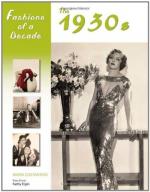|
This section contains 191 words (approx. 1 page at 300 words per page) |

|
During the 1930s there were seventeen Nobel Prizes awarded in chemistry and physics. Of those, six were won or shared by Americans. The Nobel Prize is widely considered to be the highest honor bestowed upon scientists and signifies worldwide recognition of their work.
1932: Irving Langmuir wins the Nobel Prize for chemistry for his discoveries in, and investigations of, surface chemistry, in particular the interaction of thorium on tungsten and oil films on water.
1934: Harold C. Urey wins the Nobel Prize for chemistry for isolating a hydrogen isotope heavier than the common hydrogen atom and called deuterium.
1936: Carl D. Anderson of the United States and Victor Franz Hess of Austria share the Nobel Prize for physics — Anderson for his discovery of the position, Hess for his discovery of cosmic radiation.
1937: Clinton J. Davisson of the United States and Sir George Paget Johnson of England win the...
|
This section contains 191 words (approx. 1 page at 300 words per page) |

|




